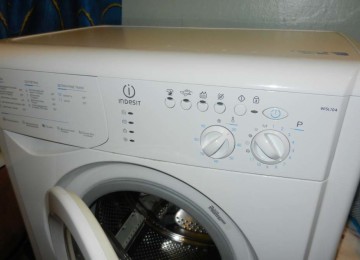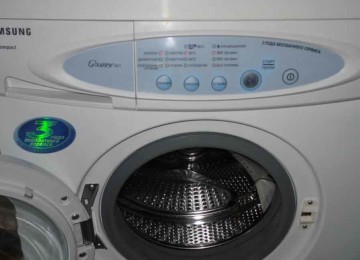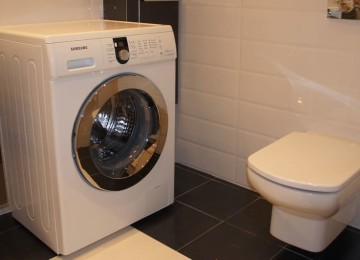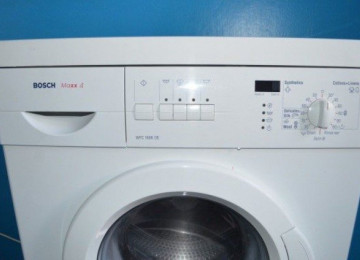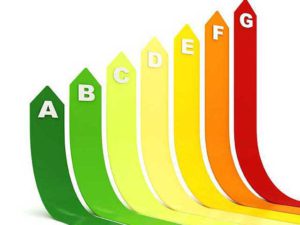
The energy consumption class of washing machines is indicated by the letters: A, B, C, D, E, F, G. After some time, the efficiency indicator became even higher, but the scale did not change. This was the reason for the new designation of the most economical devices - the letter A with one or more “pluses”.
Energy efficiency – what is it?
Everyone knows that the amount of payment for utilities is directly dependent on the consumption of electrical energy. Taking this into account, every owner tries to use the most economical household appliances. When discussing efficiency, it is necessary to take into account certain indicators called energy saving and energy efficiency.
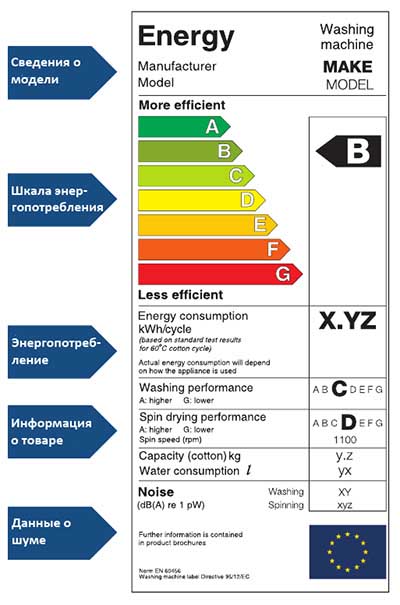
The concepts are similar, but have certain differences. Let's look at a simple example with a 100-watt light bulb. If the light in the room is turned on only when necessary, then this is energy saving. You deliberately consume less electrical energy in order to save energy.
To understand about energy efficiency, let’s take a 20-watt energy-saving lamp. You do not monitor its operating mode, but the effect will be several times higher than the standard values.
The same example applies to any household appliance.Naturally, the models of machines released not so long ago will be more efficient in energy consumption than their outdated predecessors.
The need for classes and the procedure for determining
The power of any electrical appliance is indicated in watts. Sometimes it happens that an ordinary person cannot navigate the designations. To make the task easier, manufacturers have developed a classification by the level of electricity consumption. Taking into account the energy consumed, the washing machine has a letter designation. From the table below, it follows what class the device will consume how much energy when washing a kilogram of things:
| letter marking | energy consumption per 1 kg of things, kW / h |
| A ++ | 0.15 |
| A + | 0.15 – 0.17 |
| A | 0.17 – 0.19 |
| B | 0.19 – 0.23 |
| C | 0.23 – 0.27 |
| D | 0.27 – 0.31 |
| E | 0.31 – 0.35 |
| F | 0.35 – 0.39 |
| G | from 0.39 |
It should be noted that testing to determine the class was carried out under special conditions. The readings may increase due to the modes you set.
To determine the class of electricity consumption, you need to carry out simple steps. The energy efficiency value is determined using two values - the power of the washing machine for a certain period of time and its maximum load of things. From this ratio, an indicator is obtained that helps to determine the energy consumption class of the unit.
For example, you have a machine with a power of 0.8 kW / h and a loading volume of 4 kg. The desired result is 0.2. It follows that your device belongs to class B.
Decoding rules
Today, manufacturers indicate the main characteristics of the units they produce, including the energy consumption class, on the label attached to household appliances. In addition to the energy efficiency value, there is information about the type of device, model and manufacturer, electricity consumption.
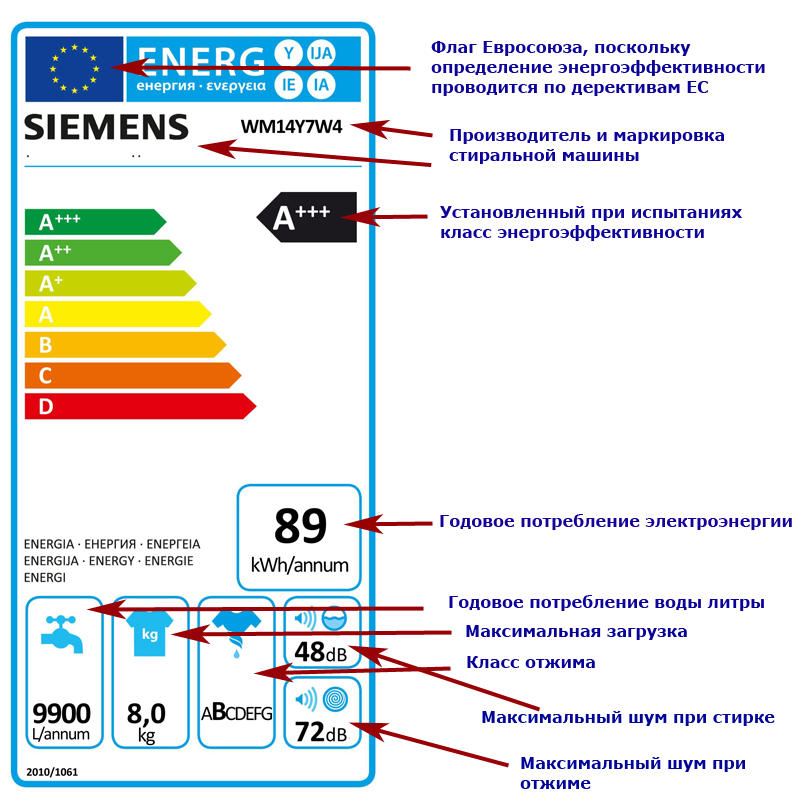
The last of the parameters can change based on the characteristics of the washing process. The label indicates the capacity of the drum and the maximum speed of its rotation, the degree of noise, and the volume of water consumed. There are a couple more characteristics - washing and the spinning process.
After studying the information, you can use color shades to determine which letter is characteristic of the device. More economical units are indicated in a rich green tint, machines with a higher value are indicated in light green tones. Yellow colors are characteristic of aggregates C and D, the remaining types are indicated by orange, light red and red.
Drying class
This indicator is also determined in accordance with international standards and is marked with one of the letters of the English alphabet. Class “A” corresponds to the highest spin class; it is assigned to the machine if, after the washing process, the laundry contains no more than forty-five percent water. The more classy, the drier things are.

Logical thinking suggests that the level of its class depends on the maximum speed of the machine. From a practical point of view, this is observed, because class A includes models capable of making from 1,200 to 14,600 revolutions per minute. But there are certain exceptions to this rule.
Which energy class is better? No one gives a definite answer to this question.
Even in spinning clothes, there are certain features:
- A washing machine with a small tank size is installed in a small room. It produces a small number of spins and belongs to class “C”;
- a large number of revolutions is justified for a unit designed for a load of seven kilograms or more. For other devices, 1,000 rotations per minute is sufficient;
- high speed forces the laundry to come together tightly and wrinkle. As a result, things turn out dry, but are not always smoothed out with an iron;
- Cotton items and bedding sets should be spun at speeds not exceeding 1,000 circular motions per minute;
- for delicate fabrics, 400 rotations are enough.
Such reasoning creates the need not to chase the highest number of revolutions.
Examples of models
Premium washing units differ in quality and relatively high cost. This category includes models from well-known manufacturers - LG, Ariston, Electrolux, Gorenje. Such devices are considered to be of high quality and functional, and pricing policy is not a fundamental condition.
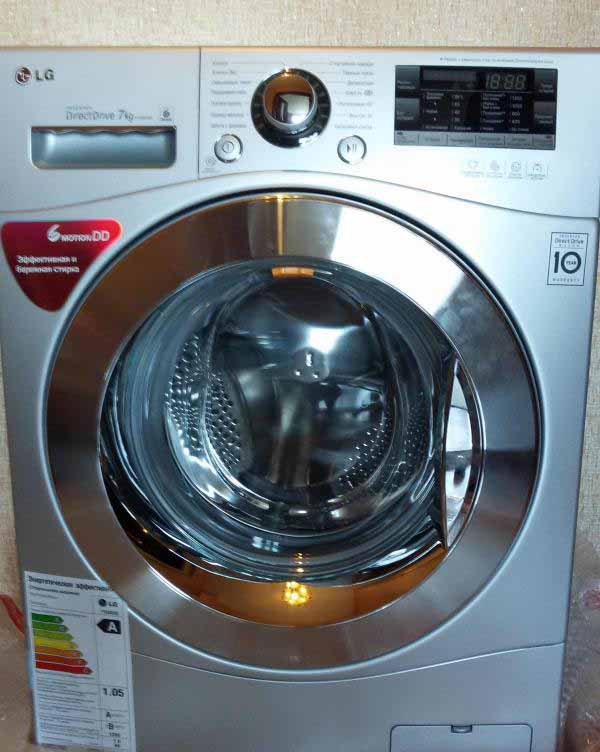
In the world rankings, the most popular is the Bosch machine, recognized as the first in three parameters - reliability, popularity, favorable ratio of cost and quality. With energy consumption class “A”, such a spinning device belongs to group “C” and is characterized by stable and long-term operation.
The Atlant machine is classified as “A++” in energy consumption, “C” in spinning, and “A” in washing. In it you can wash sports shoes, clothes, stop the process with water in the machine tank, perform soaking and accelerated washing.
Factors influencing energy consumption:
- Mode definition. If the program has a long working cycle and the water temperature is high, the machine will consume more electrical energy.
- Overload. Energy consumption will increase with the amount of laundry loaded.This condition also applies to the type of material that, when wet, will weigh more than required by the norm.
- Organization of care and operational period. After some time, scale forms on the water heating element, preventing the heating element from transmitting a normal amount of thermal energy. This increases the consumption of electrical energy. If you provide the necessary care for your water heater, you can avoid additional costs, including repair work.
The importance of energy metering
The more advantages a washing machine has, the better the quality of washing, the less resources are consumed, and this significantly saves your family budget. It turns out that the efficiency of the device itself depends on the value of energy consumption.
Manufacturers of the best models
There are many manufacturers of washing machines today, and they also specialize in the production of automatic washing machines. There is always a choice between inexpensive and expensive models.
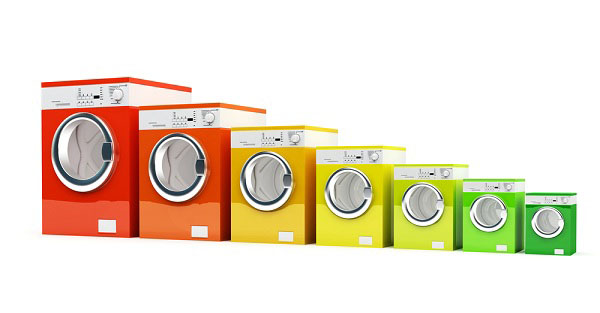
It is quite clear that competitive relations force manufacturers to produce high-quality products, so today it is almost impossible to find in stores a washing machine that is classified as class “B” in terms of energy efficiency. The same applies to the level of washing, which does not exist in European models below level “A”.
Having studied the level of energy efficiency of washing machines, the rating of their manufacturers can be compiled as follows:
- Bosch, Zanussi, Electrolux, Mile;
- LG, Samsung;
- Ariston, Indesit.
Conclusion
A high energy efficiency indicator does not mean that the device will consume a small amount of electrical energy.For example, a refrigerator with a pair of A++ type compressors will consume more energy than its single-compression counterpart. When choosing household appliances, these features must be taken into account.






